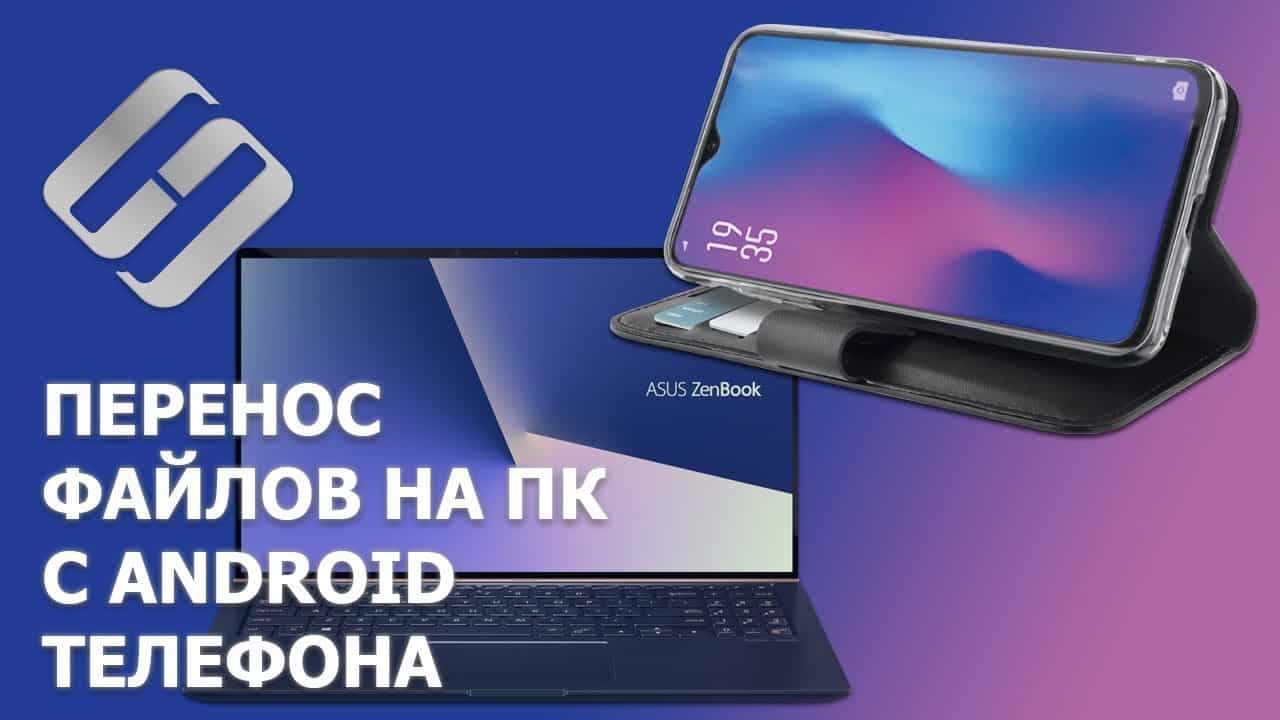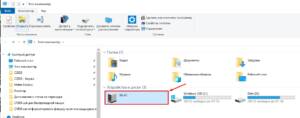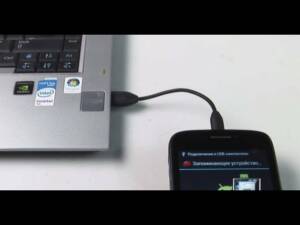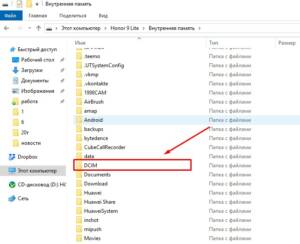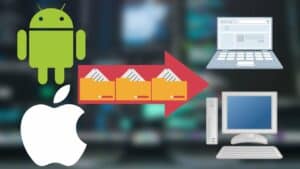Best ways to transfer data
Transferring data between devices is an integral part of our daily lives. Typically, we transfer data from our phone to our computer to free up space on the device or to make editing files more convenient. In this article, we will look at the best ways to transfer data.1. USB cable: This is the most common method for transferring data. Just connect your phone to your computer using a USB cable and the devices will automatically recognize each other. You can drag and drop files from your phone to your computer and vice versa.2. Cloud Storage: Using cloud storage such as Google Drive or Dropbox, you can easily transfer files between devices. Simply upload files to the cloud service from your phone and download them to your computer.3. Wi-Fi: If you have a Wi-Fi connection, you can use data apps like AirDroid or Pushbullet. They allow you to transfer files between devices without the need to connect a cable.4. Bluetooth: If your computer has a Bluetooth adapter, you can use it to transfer data. Simply turn on Bluetooth on both devices and transfer files.5. QR codes: These are a convenient way to transfer small files such as links or contacts. Using apps like QR Code Reader, you can quickly scan QR codes from your phone and transfer the data to your computer. Now you know the best ways to transfer data between your phone and computer. Choose the one that is most convenient for you and enjoy fast and easy file transfer.
Bluetooth: safe but slow
Bluetooth is a wireless data technology that allows devices to exchange information over short distances. Even though Bluetooth is a fairly secure method of transferring data, its transfer speed is low.
If you want to transfer data from your phone to your computer using Bluetooth, be prepared that the process may take some time. This is especially true if you want to transfer large amounts of information, such as photos or videos.
Also, before you start transferring data via Bluetooth, you should make sure that both devices have Bluetooth enabled. After this, you need to connect the devices to each other and select the files you want to transfer.
Overall, Bluetooth can be a useful tool for transferring small amounts of data between devices, but if you want to transfer large files, it is recommended to use other data transfer methods such as a USB cable or cloud storage.
Don't forget that transferring data can require a lot of power, so make sure you have enough charge on your device.
Wi-Fi: fast and convenient
When it comes to transferring data from your phone to your computer, Wi-Fi can be your best friend. This wireless data transfer method allows you to quickly and easily send photos, videos, and other files from your phone to your computer.
First, make sure both devices are connected to the same Wi-Fi network. Then, on your phone, open the Settings app and find the Wi-Fi section. Click on the 'Turn on Wi-Fi' button and select the network you want to connect to.
On your computer, you need to open your Wi-Fi control panel and select the same network you connected your phone to. After this, you can start transferring files from your phone to your computer.
If you are using Windows 10, you have another convenient way to transfer files via Wi-Fi - the Receive app. It allows you to create a temporary code with which you can access your computer from your phone and send files to it.
Overall, Wi-Fi is a simple and convenient way to transfer files from your phone to your computer. So if you want to transfer your data quickly and easily, try using this method.
USB cable: the easiest way
Transferring data from your phone to a computer may be necessary in various cases: to create a backup copy, to transfer photos or music, to transfer files to another device, etc.
d. There are several ways to transfer data, but the simplest is to use a USB cable.
To transfer data from your phone to your computer, you need to connect the devices with a cable. Usually the cable comes with the phone, but if you don't have it, you can purchase it at an electronics store. Once connected, the phone will be recognized by the computer and data transfer will be possible.
In order to transfer files, you need to open Explorer on your computer and select your phone in the list of devices. You can then drag and drop the files you need onto your computer or vice versa. In addition to this, you can use special data management programs on your phone, which can also help with data transfer.
A USB cable is a simple and convenient way to transfer data from your phone to your computer. It allows you to transfer files quickly and effortlessly. If you have a cable, you don’t need to look for other ways to transfer data, as this option is the most convenient and accessible.
How to choose the right data transfer method
Choosing a data transfer method can be difficult, especially if you are not familiar with the technologies and software used for this purpose. It is important to choose an appropriate data transfer method to avoid errors and speed up the transfer process.
If you want to transfer data from your phone to your computer, the method you choose will depend on the type of data and the devices you use. For example, you can use a USB or Bluetooth cable for music and photos, or cloud services or email for documents and files.
When choosing a data transfer method, it is also important to consider transfer speed, security and availability. Some methods may be faster but less secure, while others may be more secure but less convenient to use.
Ultimately, the data transfer method you choose depends on your individual needs and preferences. However, if you are not sure which method to choose, it is best to consult a specialist or search for information on the Internet.
Be careful and remember to back up your data before transferring to avoid losing important information.
How to connect your phone to your computer
Transferring data from your phone to your computer can be very convenient, but it requires you to connect your phone to your computer correctly. There are several connection methods, which we will discuss below.
1. Connect via USB cable: Connect your phone to your computer using a USB cable. In most cases, the computer will install the necessary drivers for your phone, but in some cases you may need to install the drivers manually.
2. Connect via Bluetooth: If your computer and phone support Bluetooth, you can connect them to each other. But before you do this, make sure that the Bluetooth feature is enabled on both devices.
3. Connect via Wi-Fi: Some phones and computers can be connected to each other via Wi-Fi. To do this, you need to configure the appropriate settings on both devices.
Once you have successfully connected your phone to your computer, you can transfer data such as photos, music, videos or documents. To do this, you may need to use special programs such as iTunes, Samsung Smart Switch or Windows Media Player.
When transferring data, be careful and save it in a safe place. Also, do not forget about the security of your phone and computer, use anti-virus software and do not connect unknown devices.
How to select the files you want to transfer
Before you start transferring data from your phone to your computer, you need to decide which files you need to transfer. If you want to save photos or videos, it's best to choose the ones you really need. Don't waste space on your phone on unnecessary pictures or recordings.
If you want to save contacts, then select those that you really need on your computer. You shouldn't copy all your contacts if you only use a few of them.
If you want to save messages, then select the ones you really need. Don't waste space on your phone on old messages or messages from strangers.
In general, before you start transferring data from your phone to your computer, decide which files you need. This will help you save space on your phone and not fill up your computer's memory with unnecessary data.
How to save data on your computer
If you want to save data from your phone to your computer, then first you need to know how to save data on the computer itself. There are several methods you can use for this purpose.
1. External hard drive. Connect an external hard drive to your computer and copy the necessary data to it. This is a convenient way to store a large amount of information.
2. Cloud storage. There are many cloud services, such as Google Drive, Dropbox, OneDrive and others, that allow you to save data over the Internet. Upload your data to the cloud and access it from any device.
3. Flash drive. Flash drives are portable and convenient for transferring data. Connect the flash drive to your computer and copy the necessary data to it.
Choose the method that suits you to save your data on your computer, and you can easily transfer it from your phone to your computer.
When you transfer data from your phone to your computer, it is important to ensure that the process is successful and that all files and contacts have been transferred successfully. There are several ways to check that everything went smoothly.
- Check that all files are in place. After transferring files to your computer, check that all files are in the correct folder and open without problems. If some files are missing or won't open, they may not have been transferred successfully.
- Check that all contacts are in place. If you're transferring contacts from your phone to your computer, make sure they're all in your contacts list. If any contacts are missing, they may not have been transferred successfully.
- Check that all applications are working. If you're transferring apps from your phone to your computer, make sure they all work properly and open without problems. If some apps don't work, they may not have been transferred successfully or may not be compatible with your computer.
That's all! If you follow these simple steps, you can ensure that all your data has been successfully transferred from your phone to your computer. Happy transfer!
Read further:
